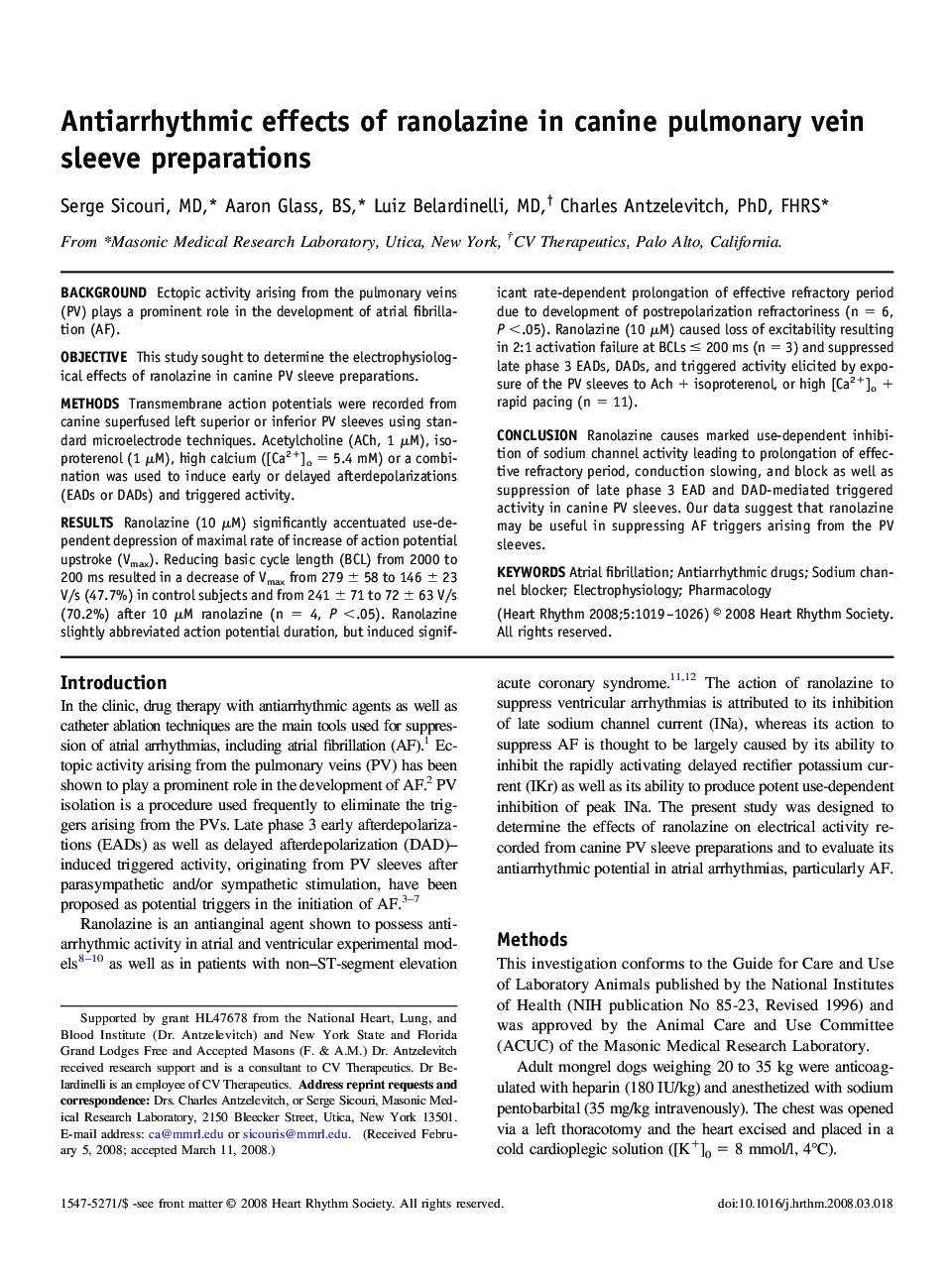| Article ID | Journal | Published Year | Pages | File Type |
|---|---|---|---|---|
| 2925206 | Heart Rhythm | 2008 | 8 Pages |
BackgroundEctopic activity arising from the pulmonary veins (PV) plays a prominent role in the development of atrial fibrillation (AF).ObjectiveThis study sought to determine the electrophysiological effects of ranolazine in canine PV sleeve preparations.MethodsTransmembrane action potentials were recorded from canine superfused left superior or inferior PV sleeves using standard microelectrode techniques. Acetylcholine (ACh, 1 μM), isoproterenol (1 μM), high calcium ([Ca2+]o = 5.4 mM) or a combination was used to induce early or delayed afterdepolarizations (EADs or DADs) and triggered activity.ResultsRanolazine (10 μM) significantly accentuated use-dependent depression of maximal rate of increase of action potential upstroke (Vmax). Reducing basic cycle length (BCL) from 2000 to 200 ms resulted in a decrease of Vmax from 279 ± 58 to 146 ± 23 V/s (47.7%) in control subjects and from 241 ± 71 to 72 ± 63 V/s (70.2%) after 10 μM ranolazine (n = 4, P <.05). Ranolazine slightly abbreviated action potential duration, but induced significant rate-dependent prolongation of effective refractory period due to development of postrepolarization refractoriness (n = 6, P <.05). Ranolazine (10 μM) caused loss of excitability resulting in 2:1 activation failure at BCLs ≤ 200 ms (n = 3) and suppressed late phase 3 EADs, DADs, and triggered activity elicited by exposure of the PV sleeves to Ach + isoproterenol, or high [Ca2+]o + rapid pacing (n = 11).ConclusionRanolazine causes marked use-dependent inhibition of sodium channel activity leading to prolongation of effective refractory period, conduction slowing, and block as well as suppression of late phase 3 EAD and DAD-mediated triggered activity in canine PV sleeves. Our data suggest that ranolazine may be useful in suppressing AF triggers arising from the PV sleeves.
